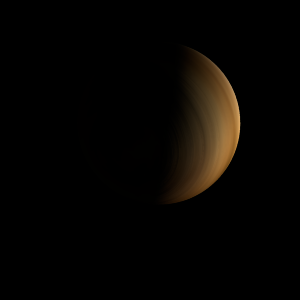|
|
Space Astro
|
Info for exoplanet "Porhytar"
| Scientific (actual) data |
|---|
| Name | DANCe J16135217-2443562 |
| Planet status | Confirmed |
| Planet mass | 10 |
| Discovered | 2022 |
| Updated | 2025-08-31 |
| Temperature (kelvin) | 1880 |
| Publication | Published in a refereed paper |
| Detection type | Imaging |
| Mass measurement type | Theoretical |
| Right ascension | 243.47° |
| Declination | -24.73° |
| Star distance | 145 |
| Wikipedia article | DANCe J16135217-2443562 |
Back
| |
| Fictional info (?) |
|---|
| Suggested name | Porhytar |
| Planet type | Huge cold gas giant |
| A prominent result is the "great green spot", a giant storm that is known to have existed for centuries since it was first seen by telescope. |
| Atmosphere | Xenon | 74% |
| 2H2O | 25% |
| Water vapor | 0.021% |
| Carbon dioxide | 0.018% |
| Atmospheric pressure | 0.18 bar |
 |
| No known satellites |
| Google search for Porhytar |
|
Website by Joachim Michaelis
|
|
|
|